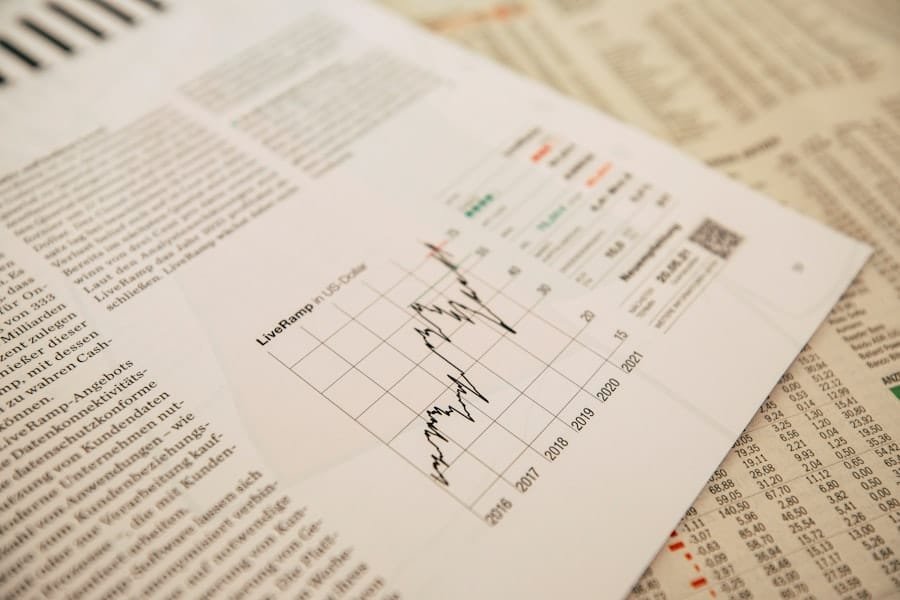Derivatives are financial instruments that derive their value from an underlying asset or group of assets. These underlying assets can include stocks, bonds, commodities, currencies, interest rates, and market indexes. Derivatives are used by investors and businesses to manage risk, speculate on price movements, and hedge against potential losses.
There are several types of derivatives, including options, futures, forwards, and swaps. Options give the holder the right, but not the obligation, to buy or sell an asset at a specified price within a certain time frame. Futures contracts obligate the buyer to purchase an asset at a predetermined price on a specified future date, while the seller is obligated to provide the asset.
Forwards are similar to futures but are customized contracts traded over-the-counter. Swaps involve the exchange of cash flows or assets between two parties based on predetermined terms. Derivatives play a crucial role in financial markets by providing liquidity, price discovery, and risk management.
They allow investors to gain exposure to various asset classes without having to own the underlying assets. Derivatives also enable market participants to hedge against adverse price movements and manage their exposure to market risks. Additionally, derivatives facilitate price discovery by reflecting market expectations and incorporating new information into asset prices.
Overall, derivatives contribute to the efficiency and functioning of financial markets by enabling investors to allocate capital more effectively and manage their risk exposure.
Key Takeaways
- Derivatives are financial instruments whose value is derived from an underlying asset, and they can be used for hedging, speculation, and arbitrage.
- Derivatives play a crucial role in market stability by providing liquidity, price discovery, and risk management for market participants.
- While derivatives can amplify market volatility, they can also help mitigate it by allowing investors to hedge against price fluctuations.
- Regulatory measures such as margin requirements, position limits, and reporting standards are essential for ensuring stability in the derivatives market.
- Case studies of derivatives market instability, such as the 2008 financial crisis, highlight the need for effective risk management and oversight in the derivatives market.
The Role of Derivatives in Market Stability
Enhancing Liquidity
Derivatives contribute to market liquidity by allowing investors to enter and exit positions more easily, thereby reducing transaction costs and improving market efficiency. This is because liquidity refers to the ease with which an asset can be bought or sold without significantly impacting its price.
Facilitating Price Discovery
Derivatives prices incorporate market expectations and new information, which helps in determining the fair value of underlying assets. This process of price discovery ensures that asset prices accurately reflect supply and demand dynamics, leading to more efficient markets.
Enabling Effective Risk Management
Derivatives enable market participants to manage their exposure to various risks, including market, credit, and interest rate risks. By using derivatives, investors can hedge against adverse price movements and reduce their vulnerability to market volatility. This risk management function of derivatives helps in stabilizing financial markets by mitigating the impact of sudden price fluctuations and reducing systemic risk.
Overall, derivatives contribute to market stability by enhancing liquidity, facilitating price discovery, and enabling effective risk management for market participants.
The Impact of Derivatives on Market Volatility

While derivatives play a crucial role in promoting market stability, they can also have an impact on market volatility under certain conditions. One way in which derivatives can contribute to market volatility is through their use for speculative purposes. Speculative trading in derivatives can lead to excessive price fluctuations in underlying assets, as investors may engage in leveraged positions that amplify market movements.
This speculative activity can result in increased volatility and may lead to abrupt price swings in financial markets. Another factor contributing to market volatility is the interconnectedness of derivative markets with other financial markets. Derivatives are often used for hedging purposes, but they can also create linkages between different asset classes and markets.
For example, a significant movement in derivative prices can spill over into the underlying asset markets, leading to increased volatility across multiple financial instruments. This interconnectedness can exacerbate market volatility and pose challenges for market stability. Moreover, the use of complex derivative products, such as structured products and exotic options, can introduce additional sources of volatility into financial markets.
These complex derivatives may have nonlinear payoffs and intricate risk profiles, which can lead to unexpected price movements and increased uncertainty in the markets. As a result, the proliferation of complex derivative products can contribute to heightened volatility and pose challenges for market stability.
Regulatory Measures for Derivatives Market Stability
In response to the potential impact of derivatives on market stability and volatility, regulatory authorities have implemented measures to enhance the resilience of derivative markets and mitigate systemic risks. One key regulatory measure is the implementation of margin requirements for derivative transactions. Margin requirements mandate that market participants maintain a certain level of collateral to cover potential losses from their derivative positions.
By imposing margin requirements, regulators aim to reduce counterparty credit risk and enhance the stability of derivative markets. Another regulatory measure aimed at promoting market stability is the central clearing of derivative transactions through central counterparties (CCPs). CCPs act as intermediaries between buyers and sellers of derivative contracts, guaranteeing the performance of these contracts and reducing counterparty risk.
By centralizing the clearing of derivative transactions, CCPs help in mitigating systemic risk and enhancing the overall stability of derivative markets. Additionally, regulatory authorities have focused on enhancing transparency in derivative markets through reporting requirements and trade repositories. By mandating the reporting of derivative transactions and maintaining trade repositories, regulators aim to improve market oversight and surveillance while promoting greater transparency for market participants.
These transparency measures help in identifying potential risks and vulnerabilities in derivative markets, thereby contributing to market stability. Furthermore, regulatory authorities have introduced measures to address the risks associated with complex derivative products by imposing stricter disclosure requirements and risk management standards for these products. By enhancing transparency and risk management practices for complex derivatives, regulators aim to mitigate potential sources of volatility and instability in financial markets.
Case Studies of Derivatives Market Instability
Several historical examples illustrate the potential impact of derivatives on market instability. One notable case is the 1998 collapse of Long-Term Capital Management (LTCM), a hedge fund that utilized complex derivative strategies. LTCM’s highly leveraged positions in interest rate derivatives led to significant losses when global financial markets experienced a period of heightened volatility.
The fund’s collapse had widespread repercussions on financial markets, highlighting the potential risks associated with excessive leverage and complex derivative strategies. Another case study is the 2008 global financial crisis, which was exacerbated by the widespread use of mortgage-backed securities (MBS) and credit default swaps (CDS). The proliferation of complex derivative products tied to subprime mortgages contributed to systemic risks in the financial system, leading to a severe downturn in global markets.
The interconnectedness of derivative markets with other financial sectors amplified the impact of the crisis, underscoring the potential for derivatives to contribute to market instability during periods of stress. Furthermore, the 2015 Swiss franc crisis demonstrated how unexpected currency movements can lead to significant losses for market participants with derivative exposures. Following the Swiss National Bank’s decision to abandon its currency peg against the euro, many market participants incurred substantial losses on their derivative positions tied to the Swiss franc.
This event highlighted the potential for unexpected market developments to trigger volatility and instability in derivative markets.
The Future of Derivatives and Market Stability

Regulatory Reforms and Market Resilience
Regulatory authorities are likely to continue implementing measures aimed at enhancing transparency, risk management practices, and resilience in derivative markets. This may include further reforms related to margin requirements, central clearing arrangements, and reporting standards for derivative transactions.
Technological Innovations and Operational Efficiency
Technological innovations such as distributed ledger technology (DLT) and smart contracts have the potential to transform derivative markets by improving operational efficiency and reducing counterparty risks. DLT-based platforms could streamline derivative transactions and enhance transparency while reducing settlement times and operational complexities. Smart contracts could automate aspects of derivative contracts, leading to greater efficiency and accuracy in trade execution.
Evolving Market Dynamics and Sustainable Investing
Evolving market dynamics such as the increasing prominence of environmental, social, and governance (ESG) considerations are likely to influence the development of derivative products focused on sustainable investing and risk management. The integration of ESG factors into derivative strategies may lead to new opportunities for investors while promoting greater resilience and stability in financial markets.
Balancing the Benefits and Risks of Derivatives
In conclusion, derivatives play a crucial role in financial markets by providing liquidity, price discovery, and risk management capabilities. While derivatives contribute to market stability by enhancing liquidity and facilitating risk management for market participants, they can also have an impact on market volatility under certain conditions. Regulatory measures aimed at promoting market stability include margin requirements, central clearing arrangements, transparency initiatives, and enhanced oversight of complex derivative products.
Historical case studies highlight the potential risks associated with derivatives and their impact on market instability during periods of stress. Looking ahead, ongoing regulatory reforms, technological advancements, and evolving market dynamics will shape the future of derivatives and their role in promoting market stability. It is essential for market participants and regulators to balance the benefits and risks of derivatives while promoting resilience and stability in financial markets.
By addressing potential sources of volatility and enhancing risk management practices, derivatives can continue to contribute positively to market stability while mitigating systemic risks.
If you’re interested in learning more about the impact of derivatives on market stability, you should check out the article “Understanding the Role of Derivatives in Financial Markets” on The Econosphere. This article provides a comprehensive analysis of how derivatives can affect market stability and offers valuable insights into their role in the financial markets. It’s a must-read for anyone looking to deepen their understanding of this complex topic.
FAQs
What are derivatives?
Derivatives are financial contracts that derive their value from an underlying asset, such as stocks, bonds, commodities, or currencies. Common types of derivatives include options, futures, forwards, and swaps.
How do derivatives impact market stability?
Derivatives can impact market stability in several ways. They can be used for hedging and risk management, which can help stabilize prices and reduce volatility. However, they can also amplify market movements and contribute to systemic risk if not properly regulated.
What are the potential benefits of derivatives?
Derivatives can provide investors with opportunities to hedge against price fluctuations, speculate on future price movements, and diversify their portfolios. They can also improve market liquidity and efficiency.
What are the potential risks of derivatives?
Derivatives can pose risks such as counterparty risk, liquidity risk, and market risk. They can also be used for speculative purposes, leading to excessive leverage and potential market instability.
How are derivatives regulated?
Derivatives are regulated by government agencies and financial regulatory bodies to ensure transparency, stability, and investor protection. Regulations may include margin requirements, position limits, and reporting requirements for derivative transactions.
What are some examples of derivative instruments?
Examples of derivative instruments include stock options, commodity futures, interest rate swaps, and currency forwards. These instruments allow investors to gain exposure to the price movements of the underlying assets without owning them directly.








